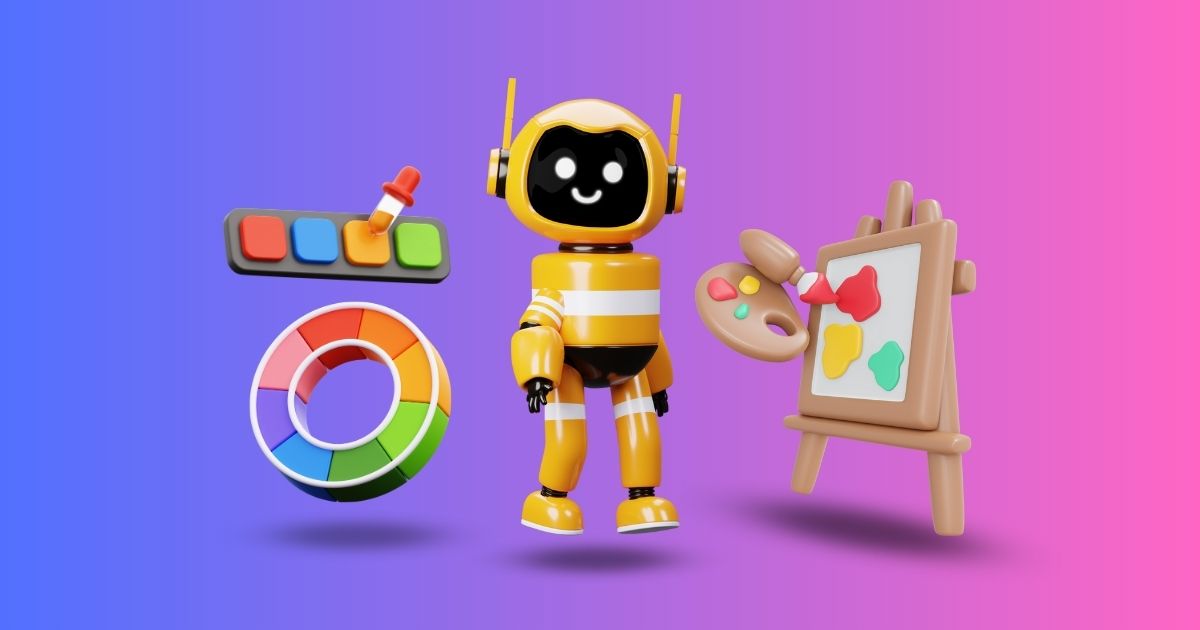
“I dream of painting, and then I paint my dream.” – Vincent van Gogh
As someone who liked to paint the traditional way, I was quite intrigued and perplexed by the idea of an AI painting generator.
In the field of art, where originality and skills reign supreme, will artificial intelligence push artists to be more creative, or will it undervalue traditional artistic skills?
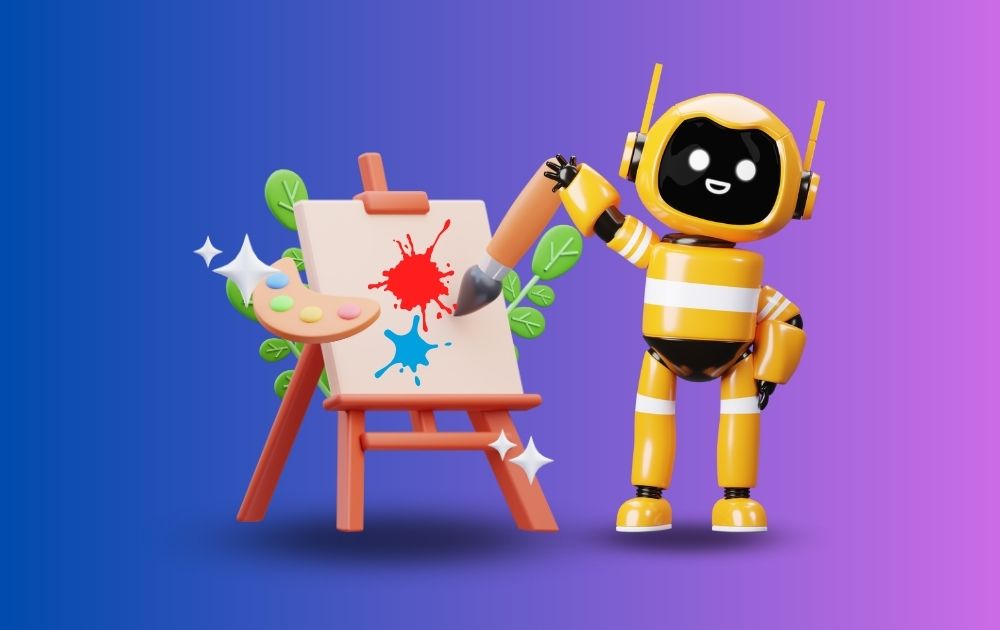
In this article, we’ll discuss AI-generated images, particularly ones that mimic paintings. We’ll go through available AI image generator apps available and what they can do. We’ll also tackle some ethical debates surrounding the tool and assess how it will affect art, culture, and society.
Let’s plunge straight in!
Can AI create a painting?
In theory, yes, AI can create paintings. With today’s machine learning and generative models, AI algorithms can be trained to generate original artwork from vast amounts of data. By learning patterns, styles, and techniques from existing paintings, AI algorithms can generate new images.
For instance, some AI models can replicate the style of famous artists, creating paintings that resemble the works of Van Gogh, Picasso, or other renowned artists.
Here’s an example. I used Canva’s text-to-image app and typed this prompt: “A painting of a cup of coffee using the style that Vincent van Gogh used in The Starry Night.”
You’ve probably seen the famous painting a million times, but here’s an image of The Starry Night to refresh your memory.
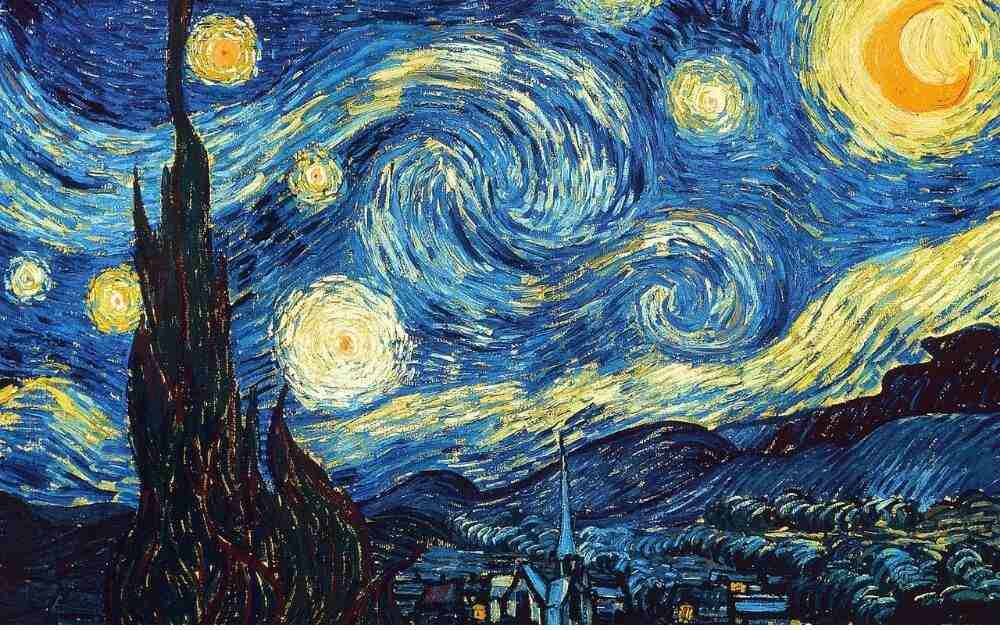
Image Credit: Vincent Van Gogh Google Art Project
Here are the images Canva generated from my prompt:
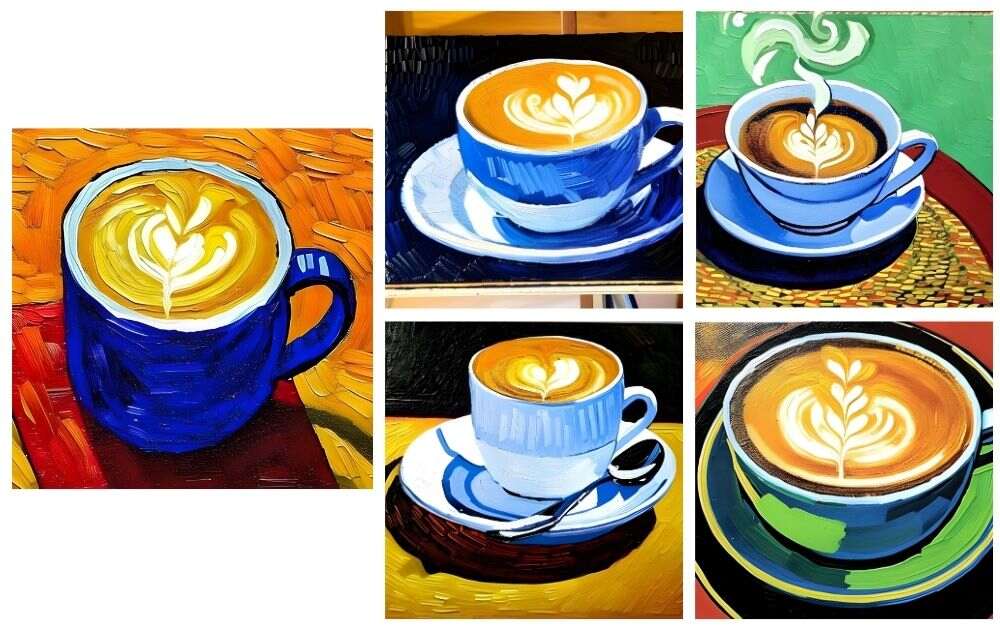
The one on the left, the largest one, I would say, is the closest to the Dutch painter’s style with an impasto effect, using broad brush strokes. The others also hint at Expressionism, and the one on the upper right gives a touch of Pointillism. Not bad.
Now, using the same text-to-image app, I typed in this prompt: “A painting of a cup of coffee using the style that Andre Masson used in Automatic Drawing.”
Andre Masson is an exceptional artist but not mainstream popular like van Gogh. Here are some of the images that the app generated:
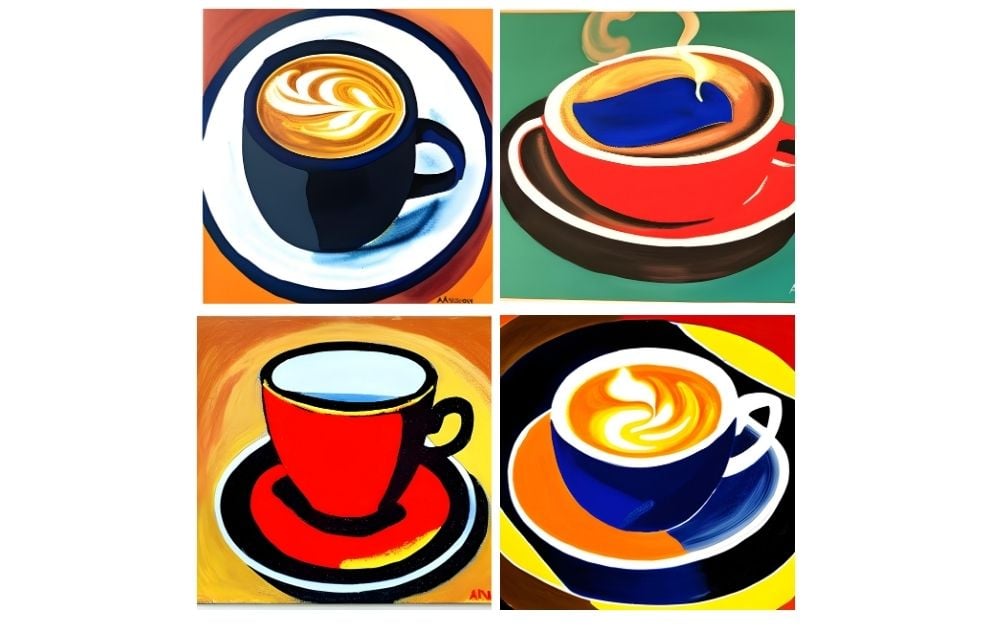
Did it do a good job this time? Well, not so much. Here’s an image of “Automatic Drawing,” which I used as a reference in the prompt:
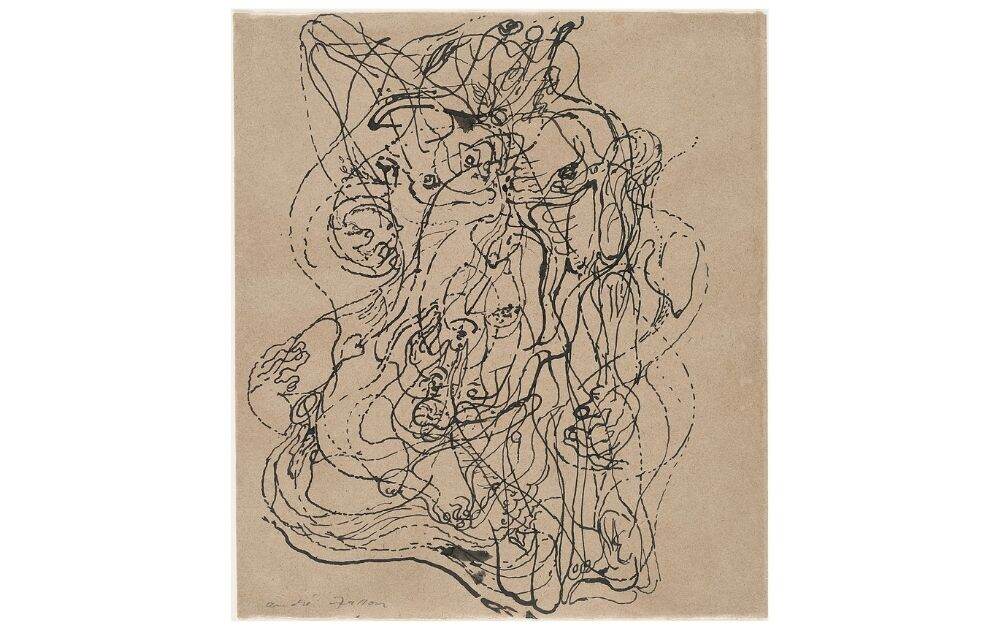
Image Credit: Andre Masson WikiArt
This second example illustrates the limitations of an AI painting generator.
Pros and Cons of AI-Generated Art
AI-generated art brings both advantages and disadvantages when compared to traditional art. Here are some of its pros:
- Creative Prompts. Artists sometimes face creative blocks or periods of artistic stagnation. AI art generation tools can provide a source of inspiration to overcome these blocks. By exposing artists to diverse styles and unconventional combinations, these apps can help stimulate creativity and encourage artists to think outside the box.
- Art Inclusivity. AI can offer learning resources, tutorials, and interactive platforms that help artists develop their skills and expand their knowledge. Online platforms and AI-powered educational tools can provide accessible and flexible learning environments for artists of all levels, regardless of their geographical location and financial status.
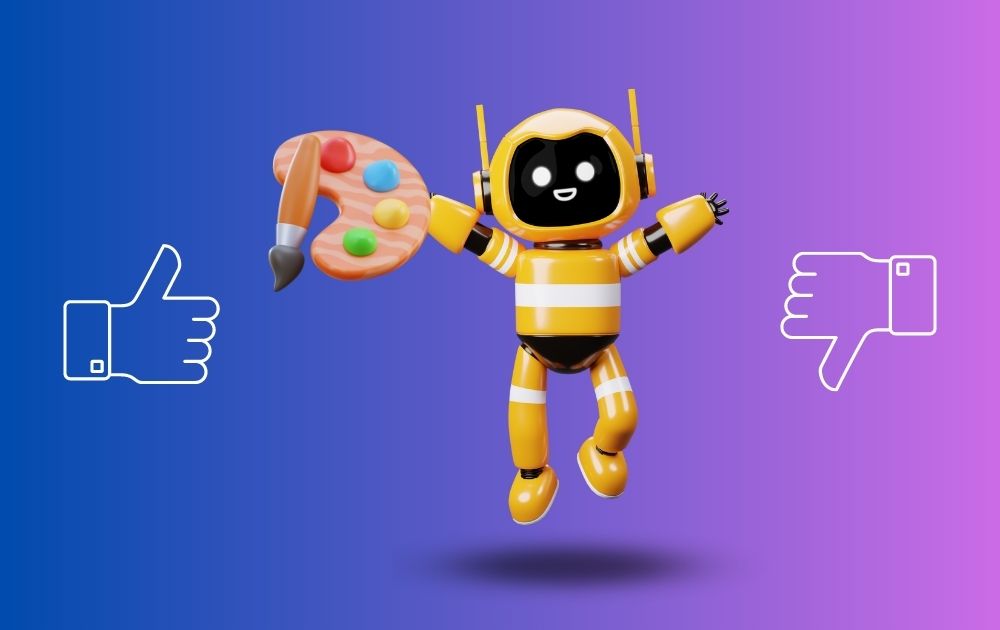
On the other side of the coin, here are the cons of AI-Generated Art:
- Lack of Human Authenticity. Obviously, AI-generated art may lack the human touch, personal emotions, and subjective experiences that traditional art often embodies. While they may copy earlier works of art, some argue that AI-generated art can feel sterile or lacking in depth and soul.
- Originality Issues. AI algorithms are designed to learn from existing data, which can result in artworks that mimic existing styles and lack originality. There is a risk of reproducing art that imitates established artists rather than creating truly unique pieces.
- Loss of Traditional Skills. With reliance on AI-generated art, there is a concern that traditional artistic skills and craftsmanship may diminish or be undervalued. The focus on technological tools may overshadow the importance of traditional art techniques and craftsmanship.
Top AI Painting Generator Tools
Here are a few of the most popular AI art generator online tools you can explore:
- NightCafe. NightCafe is a prominent AI art generator known for its extensive algorithms and user-friendly interface. It offers a credit-based system with a generous free tier and opportunities to earn credits through community participation.
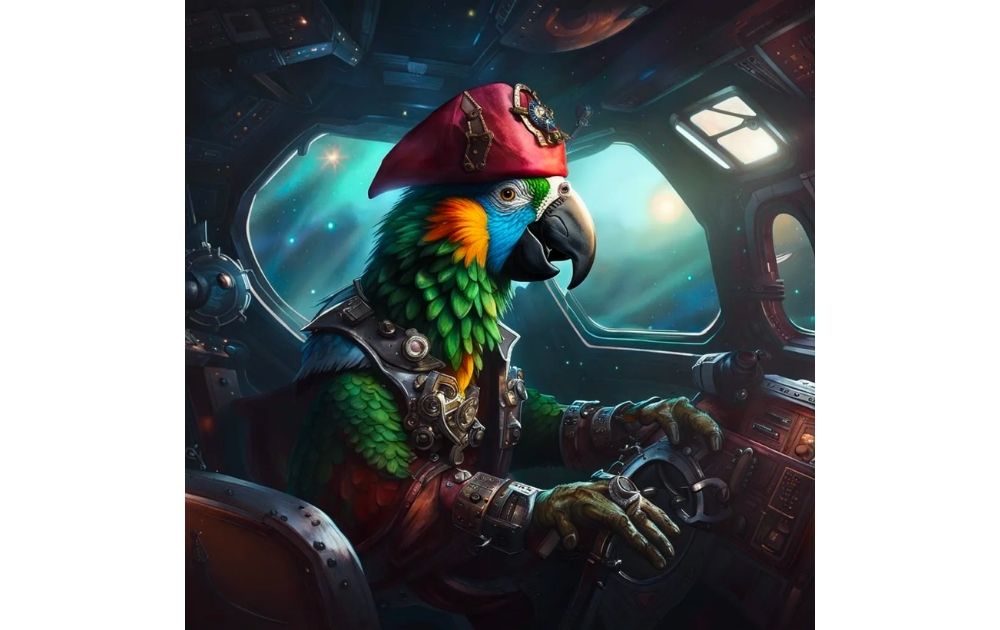
Image Credit: NightCafe
- DALL·E 2. An AI image generator developed by OpenAI, this AI art generator from text free tool allows users to quickly produce highly realistic images with an easy-to-use interface. OpenAI highlights the tool’s potential for creating illustrations, designing products, and inspiring business ideas.
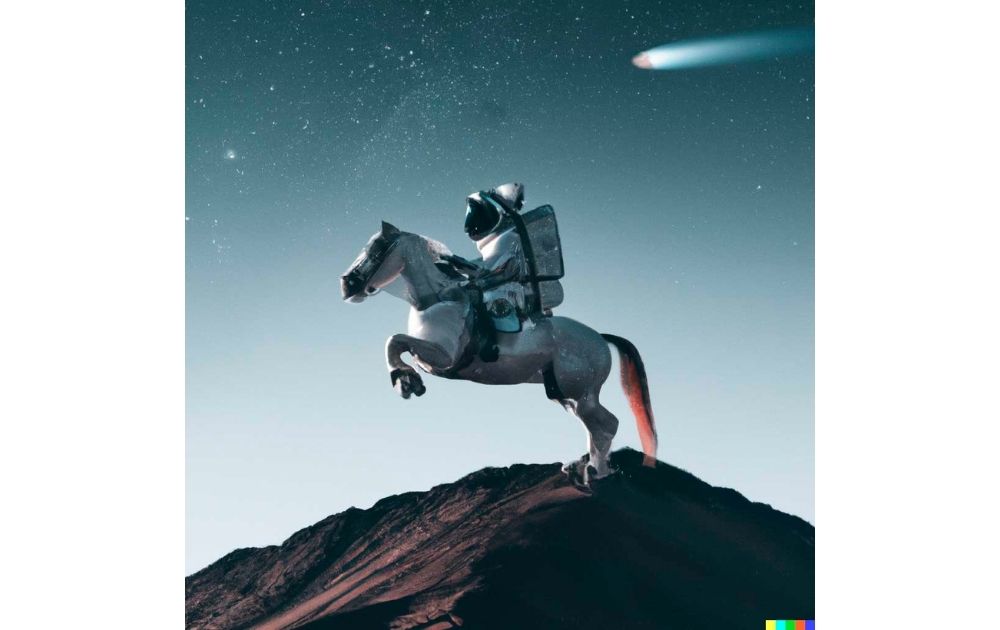
Image Credit: DALL·E 2
- Deep Dream Generator. This tool is another popular AI art generator from tex prompt that allows users to create realistic images. It utilizes a neural network trained on a vast image dataset. You can also use it as an AI art generator from photo files, meaning you can upload an image to generate a new one based on the original.
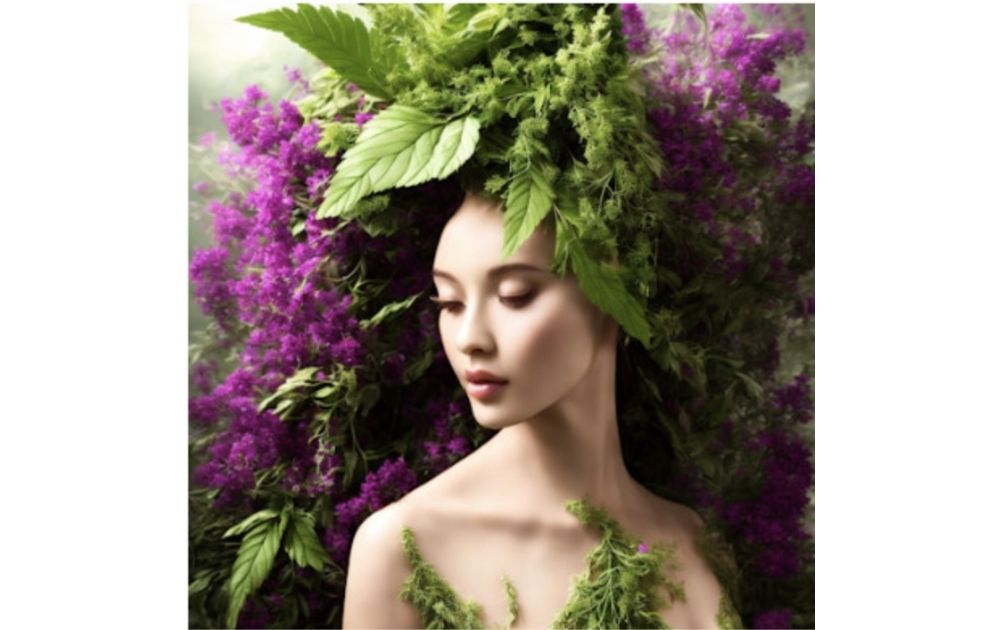
Image Credit: Deep Dream Generator
What are the ethical concerns of AI-generated content?
AI-generated art raises several ethical concerns that require careful consideration. For instance, determining the proper attribution and recognition of images from AI painting generators can be challenging. It raises questions about who should be credited as the creator or artist when AI algorithms are involved in the creative process.
It’s also important to note that AI art creators are trained on existing datasets, which can include copyrighted artworks. There is a risk that AI-generated art may inadvertently reproduce or mimic existing works, potentially infringing upon copyright and intellectual property rights.
AI algorithms can also produce unexpected or unintended outputs. This can lead to the generation of offensive, inappropriate, or controversial artworks that may harm individuals or communities.
The Lowdown
As an art enthusiast, I appreciate how AI democratizes the resources needed to create art.
In fact, I’ve been experimenting with AI image generators to create reference photos when I do oil paintings. It saves me the time needed to take photos, look for royalty-free ones, ask for permission from photo owners, and do the layout for composition purposes.
If used on its own, however, I dare say AI-generated art often lacks the human experience, emotions, and subjective intention of traditional art. That said, I personally don’t think it devalues human artistic skills simply because they’re not in the same league.
Taking off from van Gogh’s quote at the beginning of this article, I think an image painted by hand from one’s dreams is much more valuable than an image painted by an algorithm from datasets.
If you want authentic human-made illustrations and other images but don’t have the time to make them yourself, sign up with Penji and get high-quality designs created by our awesome and highly-talented human designers.
About the author

Carla Deña
Carla is a journalist and content writer who produces stories for both digital and legacy media. She is passionate about creativity, innovation, and helping small businesses explore solutions that drive growth and social impact.








